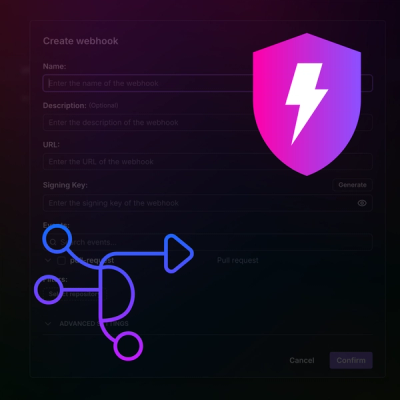
Product
Introducing GitHub Actions Scanning Support
Detect malware, unsafe data flows, and license issues in GitHub Actions with Socket’s new workflow scanning support.
emojijoiner
Advanced tools














Create your own ZWJ Emoji Combinations.🎃🎀
You can npm install EmojiJoiner like this:
npm install emojijoiner
you can bower install it:
bower install emojijoiner
you can download it from github or you can include it in your webpage with this URI:
https://kepempem.com/EmojiJoiner/EmojiJoiner.js
var PumpkinRibbon = EmojiJoiner("🎃", "🎀");You had just created an EmojiJoiner Object. This object contains A zwj property, A regexp property and A string property and it lookes like that:
{
zwj: "",
regexp: /🎃🎀/gi,
string: "🎃🎀"
}
The zwj property contains a Zero-Width-Joiner. The regexp property contains a regular expression to match your ZWJ sequence. The string property contains your ZWJ sequence.
This is a simple EmojiJoiner object.
The third parameter in the EmojiJoiner constructor is used to make a function to replace the sequence with it. For example, if you'll create this object:
var PumpkinRibbon = EmojiJoiner("🎃", "🎀", "🥓");
It will produce the same object as the one before only this time it will contain a replace property which is a function. The function will locate your ZWJ sequence and replace it with the third parameter.
var PumpkinRibbon = EmojiJoiner("🎃", "🎀", "🥓");
PumpkinRibbon.replace("foobar"); // => foobar
PumpkinRibbon.replace("foobar 🎃🎀"; // => foobar 🥓
If the third parameter will start with HTTPS:// or HTTP:// then the replace function will produce an HTML Image. To disable that or change the width and height, read about the options parameter.
The fourth parameter is used by the replace function too. It is used to replace :shortname: in the string that the replace function gets. For Example:
var PumpkinRibbon = EmojiJoiner("🎃", "🎀", "🥓", "PumpkinRibbon");
PumpkinRibbon.replace("foobar"); // => foobar
PumpkinRibbon.replace("foobar 🎃🎀"); // => foobar 🥓
PumpkinRibbon.replace("foobar 🎃🎀 :PumpkinRibbon:"); // => foobar 🥓 🥓
PumpkinRibbon.replace("foobar 🎃🎀 :PUMpKinRIBBon:"); // => foobar 🥓 🥓
The fifth parameter is used to configure the EmojiJoiner Object.
If you'd like to disable URL to Image in the replace function, set the value of the image property to false.
To set the width and height of the image, if the replacement is an image, set the value of the width and height properties to your desired width and height.
EmojiJoiner currently supports only two char sequences and it might support more in the future.
FAQs
This package is no longer supported and has been deprecated.
The npm package emojijoiner receives a total of 103 weekly downloads. As such, emojijoiner popularity was classified as not popular.
We found that emojijoiner demonstrated a not healthy version release cadence and project activity because the last version was released a year ago. It has 1 open source maintainer collaborating on the project.
Did you know?

Socket for GitHub automatically highlights issues in each pull request and monitors the health of all your open source dependencies. Discover the contents of your packages and block harmful activity before you install or update your dependencies.

Product
Detect malware, unsafe data flows, and license issues in GitHub Actions with Socket’s new workflow scanning support.

Product
Add real-time Socket webhook events to your workflows to automatically receive pull request scan results and security alerts in real time.

Research
The Socket Threat Research Team uncovered malicious NuGet packages typosquatting the popular Nethereum project to steal wallet keys.